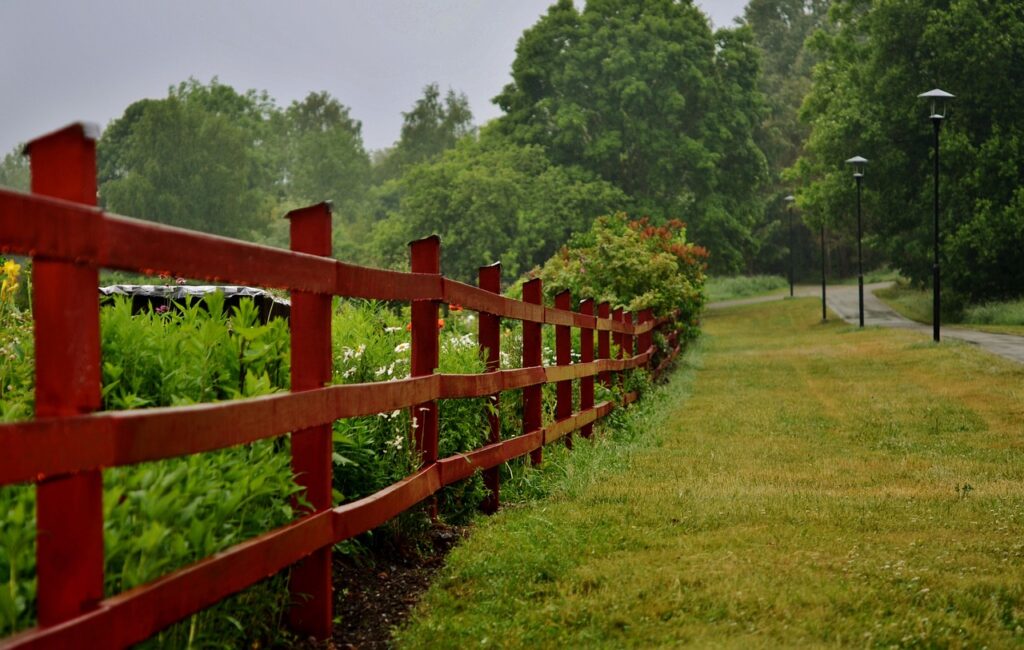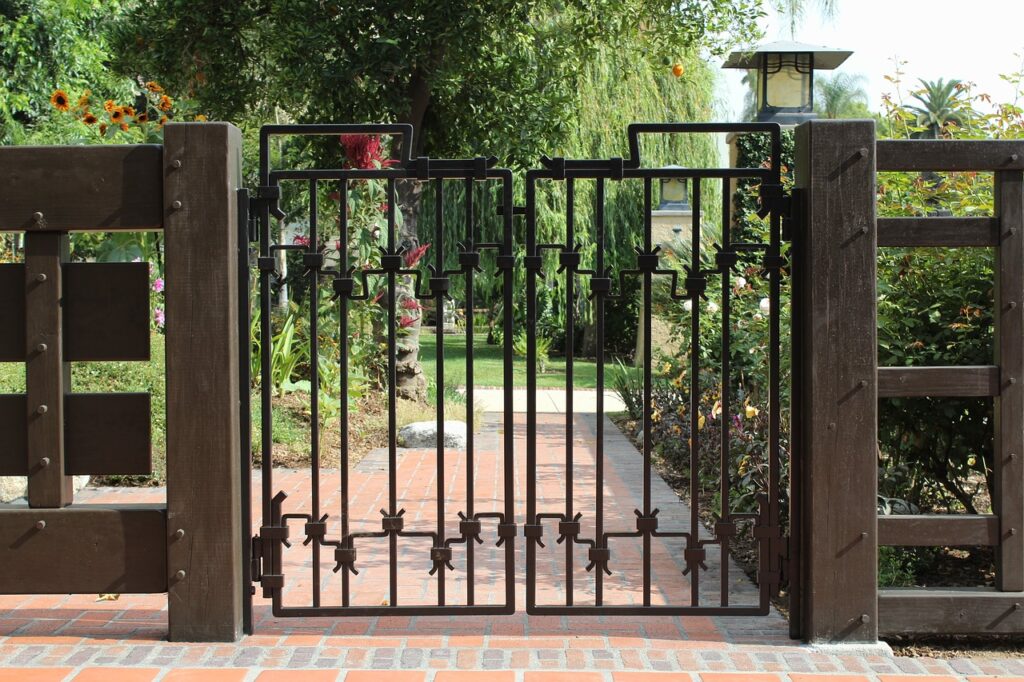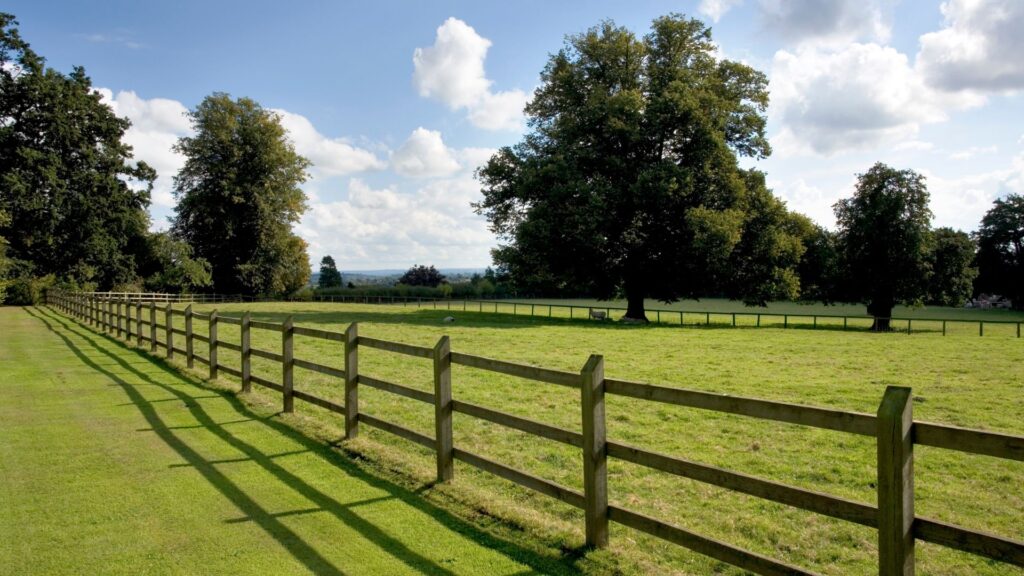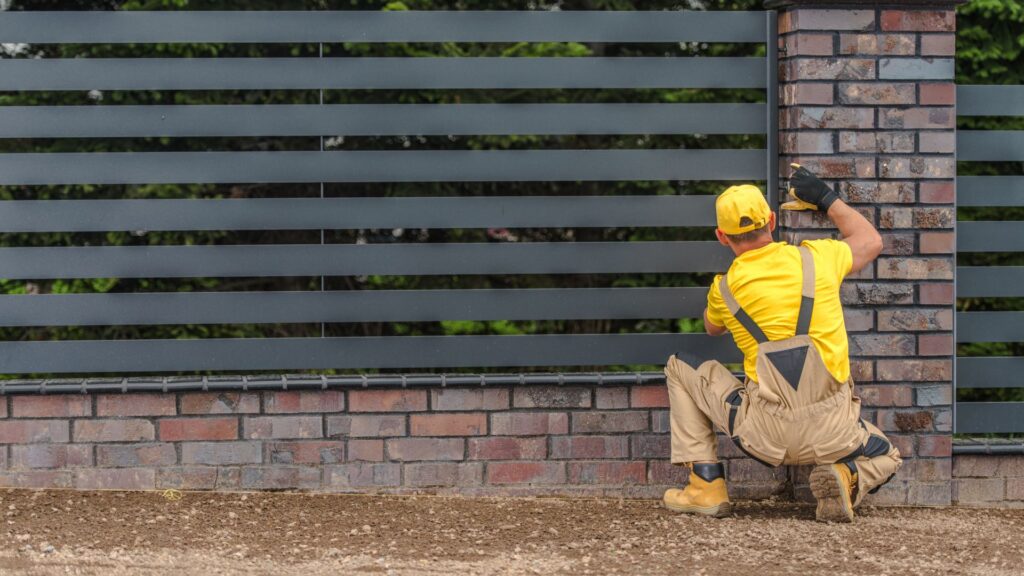When it comes to enhancing the privacy and security of your property in New Zealand, building a fence around your home is a common step. However, when this fence borders a shared driveway, the situation becomes considerably more complex. Understanding the guidelines for building fences on shared driveways is crucial not only to comply with local laws but also to maintain harmonious relationships with your neighbors. This guide aims to provide you with a comprehensive overview of the legal requirements, neighborly considerations, and practical steps necessary to navigate this process smoothly.
Building a fence on a shared driveway in New Zealand requires understanding and complying with local laws, specifically the Property Law Act 2007 and the Fencing Act 1978. Before proceeding, you must obtain consent from all homeowners sharing the driveway. Key considerations include designing a fence that does not obstruct access or visibility, checking if building consent is needed from the local council, and choosing a contractor experienced with shared driveways. Clear communication with neighbors, detailed planning, and adherence to legal requirements ensure the project enhances property security and privacy without compromising neighborly relations or access needs.
- Understanding Shared Driveways In NZ
- Legal Framework For Building Fences On Shared Driveways
- The Importance Of Good Neighbor Relations
- Planning And Designing Your Fence
- Navigating The Consent Process
- Practical Steps For Building The Fence
- Maintaining Your Fence And Driveway Relationship
- FAQs: About Guidelines For Building Fences On Shared Driveways In NZ
- Conclusion
- Find A Professional Fence And Gate Builder Near You!
Understanding Shared Driveways In NZ
What Constitutes a Shared Driveway in New Zealand
A shared driveway in New Zealand is a common passageway or road used by two or more parties to access their properties. Unlike a private driveway, which serves a single property, shared driveways provide essential access for multiple homes or buildings. They are often found in both residential and commercial areas, serving as a critical infrastructure element that maximizes land use and enhances accessibility.
The Significance of Shared Driveways in NZ’s Urban and Rural Communities
In New Zealand’s urban areas, where space can be at a premium, shared driveways are a practical solution to the challenges of limited access and the efficient use of land. They allow for the development of more compact and connected communities, facilitating easier access to homes, especially in subdivisions and densely populated neighborhoods.
In rural settings, shared driveways play a vital role in connecting properties that are set back from main roads or situated in rugged terrain. They ensure that residents have access to their homes, farms, and businesses, contributing to the rural community’s connectivity and cohesion.
Common Challenges and Disputes Related to Shared Driveways
Despite their benefits, shared driveways can also be a source of contention among property owners. Common challenges include disagreements over maintenance responsibilities, disputes about the extent of usage rights, and issues related to parking and obstruction. Maintenance of the driveway is a typical point of contention, with conflicts arising over who should bear the cost of repairs or upgrades.
Disputes may also occur when one party feels that another is overusing the driveway or restricting access through inappropriate parking or storage. These issues often require clear communication, negotiation, and sometimes legal intervention to resolve, highlighting the importance of having a well-drafted shared driveway agreement that outlines the rights, responsibilities, and expectations of all parties involved.
In conclusion, shared driveways are a crucial aspect of New Zealand’s property landscape, offering practical solutions for access and land use in both urban and rural settings. However, the shared nature of these driveways means that understanding and cooperation among all users are essential to avoid disputes and ensure that the driveway serves its intended purpose effectively.
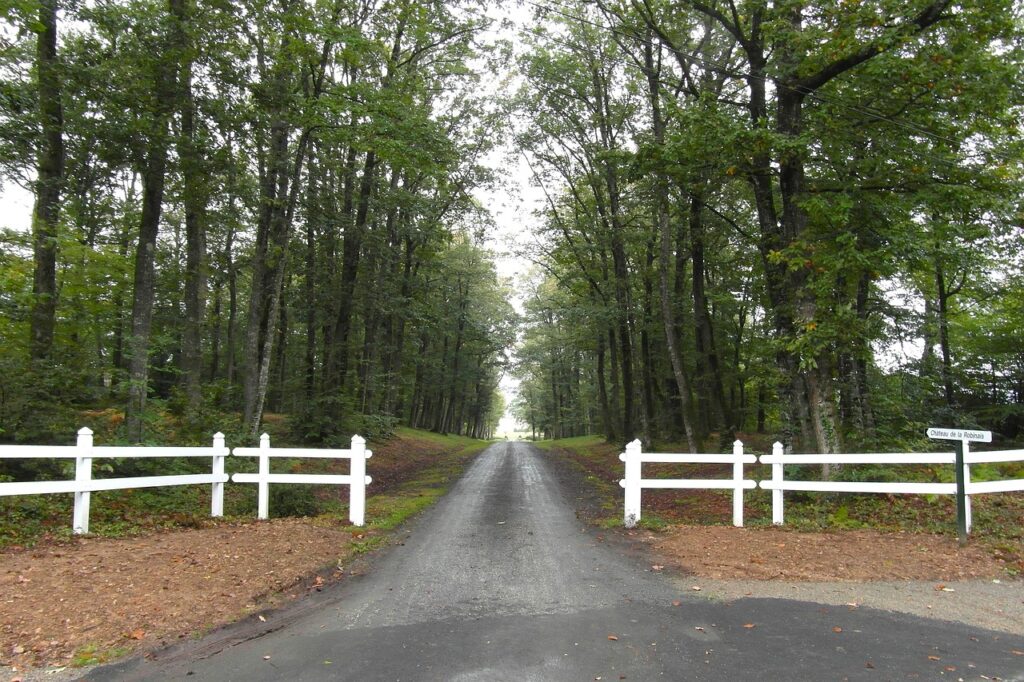
Legal Framework For Building Fences On Shared Driveways
When it comes to enhancing the privacy and security of your property, installing a fence is a common approach. However, the situation becomes more complex when you share a driveway with neighbors. It’s vital to understand the legal framework governing such modifications, particularly when considering the New Zealand context with the Property Law Act 2007 and the Fencing Act 1978. This section aims to provide a comprehensive overview of these acts as they relate to shared driveways, including key legal considerations such as boundary definitions, rights of way, and easements, and the necessity for mutual consent among affected parties.
Overview of the Property Law Act 2007 and Fencing Act 1978
The Property Law Act 2007 and the Fencing Act 1978 form the cornerstone of legal guidance in New Zealand for matters related to property boundaries and fencing, respectively. Both pieces of legislation offer a framework to resolve disputes and guide property owners on their rights and obligations.
The Property Law Act 2007 addresses various aspects of property law, including the rights and responsibilities of property owners, the use of land, and the resolution of disputes. One of its key features is the provision for easements, which are rights to use the property of another for a specific purpose, such as a shared driveway.
The Fencing Act 1978 specifically deals with the division of costs for boundary fences and outlines the process for resolving fencing disputes between neighbors. It highlights the importance of consultation and agreement between neighbors before any fencing work is undertaken, ensuring that both parties’ views are considered.
Key Legal Considerations
Boundary Definitions: Understanding where your property ends and your neighbor’s begins is crucial before installing any fence. Misunderstandings about boundary lines can lead to disputes. It’s advisable to consult a cadastral surveyor to accurately determine property boundaries.
Rights of Way and Easements: Shared driveways often involve easements, which grant the right to pass through someone else’s property. These rights are legally binding and must be honored by all parties involved. The Property Law Act provides guidance on the creation, interpretation, and enforcement of easements.
Requirement for Mutual Consent: Perhaps the most critical aspect of fencing on shared property is the need for mutual consent. The Fencing Act mandates that neighbors share the costs of boundary fences, but this also implies that both parties must agree to any new fence or modifications to an existing one. This requirement ensures that the rights and views of all affected parties are respected.
Mutual Consent Among Affected Parties
Gaining mutual consent is not just a legal requirement; it’s a gesture of goodwill and respect towards your neighbors. It involves discussing plans for the fence, considering its design, height, materials, and how it will affect both parties. This process can help avoid disputes and foster a harmonious relationship between neighbors.
In conclusion, while installing a fence on a shared driveway can enhance your property’s privacy and security, it’s essential to navigate the legal landscape carefully. Understanding the Property Law Act 2007 and the Fencing Act 1978, considering key legal factors such as boundary definitions, rights of way, and the critical need for mutual consent, can help ensure that the process goes smoothly for all parties involved. Always aim to communicate openly and respectfully with your neighbors to reach an agreement that suits everyone’s needs and legal requirements.

The Importance Of Good Neighbor Relations
Good neighbor relations are foundational to maintaining a harmonious and supportive community. This is especially true when embarking on projects that may affect the shared boundaries of your property, such as fence-building. Initiating discussions about these projects, maintaining positive relationships throughout the process, and understanding the role of mediation and dispute resolution when consensus cannot be reached are critical steps. Here’s a detailed exploration of these aspects to guide you in fostering good neighbor relations.
Strategies for Initiating Discussions About Fence-Building Projects
1. Start with Research: Before approaching your neighbor, be well-informed about local zoning laws and regulations concerning fence-building. This knowledge will help you present your case more effectively and show your neighbor that you’ve done your homework.
2. Choose the Right Time and Place: Find a suitable time to discuss your plans, ensuring it’s a convenient moment for your neighbor too. A friendly, face-to-face conversation in a neutral setting can set the stage for a constructive discussion.
3. Be Open and Honest: Clearly explain your intentions and reasons for wanting to build or modify a fence. Be transparent about the project’s scope, including timelines and any potential disruptions.
4. Listen Actively: Show genuine interest in your neighbor’s views and concerns. Active listening can help you understand their perspective and find common ground.
5. Offer to Share Costs and Benefits: If possible, propose sharing the costs and benefits of the fence project. This can make the proposal more appealing and demonstrate your commitment to fairness and cooperation.
Tips for Maintaining Positive Relationships Throughout the Process
1. Keep Communication Open: Regularly update your neighbor on the project’s progress. Keeping them informed can prevent misunderstandings and foster trust.
2. Be Considerate: Show empathy for any inconveniences the project may cause your neighbor. Small gestures, like ensuring construction noise is kept to a minimum during early or late hours, can go a long way.
3. Compromise When Necessary: Be willing to adjust your plans if it means maintaining a good relationship with your neighbor. Flexibility can lead to better outcomes for both parties.
4. Show Appreciation: Thank your neighbor for their understanding and cooperation throughout the project. A simple gesture of gratitude can strengthen your relationship for the future.
The Role of Mediation and Dispute Resolution
1. Seek Professional Help: If you and your neighbor cannot reach an agreement, consider mediation. A neutral third party can facilitate discussions and help both parties reach a mutually acceptable solution.
2. Understand Legal Avenues: As a last resort, familiarize yourself with the legal options available. However, it’s important to view this as a final step, as legal actions can strain neighbor relations.
3. Maintain Respect and Civility: Regardless of disagreements, always treat your neighbor with respect and civility. Preserving a positive relationship should remain a priority, even in disputes.
In conclusion, good neighbor relations are crucial when undertaking fence-building projects. By employing effective communication strategies, showing consideration, and being open to mediation, you can navigate these projects smoothly and maintain a peaceful community. Remember, the goal is not just to build a fence but to uphold the value of good neighborliness.

Planning And Designing Your Fence
When it comes to enhancing the privacy, security, and aesthetics of your property, constructing a fence is a pivotal decision. It’s not just about marking the boundary of your property but also about creating a harmonious blend of functionality and design. This comprehensive guide will walk you through the crucial factors you need to consider in the planning and designing phase of your fence, ensuring it meets your needs today and in the future, complies with local regulations, and harmonizes with the environment.
Considerations for Height, Materials, and Design
Height: The height of your fence is a critical factor that influences both privacy and security. A higher fence can provide better privacy and deter unauthorized entry, but it may also block light and views, affecting your and your neighbors’ enjoyment of the surrounding environment. Therefore, balance is key. Consider the primary purpose of your fence and choose a height that meets your needs without compromising the aesthetic appeal of the neighborhood.
Materials: The choice of materials for your fence not only impacts its appearance but also its durability, maintenance requirements, and cost. Wood offers a classic look and can be painted or stained to match your home, but it may require more maintenance to protect against weather and pests. Vinyl fencing is low-maintenance and comes in various styles, but it can be more expensive upfront. Metal options, like aluminum and steel, provide durability and security with minimal maintenance. When selecting materials, consider your budget, the climate in your area, and how much time you’re willing to dedicate to maintenance.
Design: A fence should complement the architectural style of your home and the surrounding landscape. Whether you prefer a simple picket fence or a more elaborate wrought-iron design, it’s important to ensure that the design respects both functionality and aesthetics. Consider the visibility and airflow your fence will provide and how it will integrate with gates or access points. A well-designed fence can enhance the overall look of your property and even increase its value.
Future Access Needs and Emergency Situations
When designing your fence, it’s crucial to think about future access needs and emergency situations. Will you need large gates for vehicle access, or a smaller gate for pedestrians? Planning for these needs ensures that your fence remains functional and accessible as your requirements evolve. Additionally, consider emergency situations. Ensure that your fence design allows for quick exit or entry by emergency services if needed. This foresight can be lifesaving in critical moments and is an essential aspect of responsible property planning.
Environmental Considerations and Local Council Regulations
Environmental Considerations: Your fence can have a significant impact on the local ecosystem. Consider the use of sustainable materials and designs that allow for wildlife movement, especially if you live near natural habitats. Additionally, think about the shadow your fence will cast and how it might affect plant life in your and your neighbors’ gardens.
Local Council Regulations: Before you begin your fencing project, it’s imperative to familiarize yourself with the local council regulations. These regulations can dictate the maximum height of your fence, the materials you can use, and how close you can build to property boundaries. Obtaining the necessary permits and approvals before construction begins can save you from costly mistakes and legal issues down the line.
Designing and planning your fence with careful consideration of height, materials, and design can significantly enhance the functionality, aesthetics, and value of your property. By also accounting for future access, emergency situations, and environmental impacts, and adhering to local regulations, you can ensure that your fencing project is successful and sustainable. Remember, a well-thought-out fence not only secures your property but also contributes to the beauty and harmony of your local community.

Navigating The Consent Process
Navigating the consent process for building or renovation projects, such as erecting a fence, can seem daunting at first. However, with a clear understanding of the requirements and a step-by-step approach, you can smoothly obtain the necessary permissions from your local council. This guide will walk you through determining if building consent is required, handling shared property considerations, and applying for consent, including the required documents, fees, and expected timeline.
Determining if Building Consent is Required
Before embarking on any building project, the first step is to check whether you need building consent from your local council. Building consent is a formal approval that ensures your project complies with the national Building Code. Here’s how to determine if your project requires consent:
1. Visit Your Local Council’s Website: Most councils provide detailed guidelines on what types of projects require consent. Look for a section dedicated to building or renovations.
2. Consider the Scope of Your Project: Minor alterations, like replacing like-for-like fences, might not need consent. However, constructing a new fence, especially if it’s above a certain height or borders a public space, usually requires approval.
3. Consult the Building Code: The national Building Code outlines specific requirements for various building activities. Familiarize yourself with the sections relevant to your project.
4. Seek Professional Advice: If in doubt, consult a building professional or your local council directly. They can provide guidance tailored to your specific project.
When Your Fence Project Affects the Shared Aspect of the Driveway
If your project involves a shared driveway or any property line adjoining your neighbor, extra steps are required:
1. Communicate with Your Neighbor: Early communication can prevent misunderstandings and disputes. Share your plans and seek their input.
2. Understand Boundary Lines: Ensure you know where your property ends and your neighbor’s begins. A surveyor can help clarify boundary lines if necessary.
3. Check for Shared Property Agreements: Some properties have legal agreements in place regarding shared spaces. Review any existing agreements or covenants.
4. Seek a Joint Consent If Required: For projects impacting shared property, both parties may need to agree and apply for consent together.
Applying for Consent: Documents Needed, Fees, and Timeline
Applying for building consent involves preparation and understanding of the process. Here’s what you need to know:
1. Documents Needed: Detailed Plans: Submit detailed drawings of your project, showing dimensions, materials, and placement relative to property boundaries.
Site Plan: A site plan showing the project in relation to the entire property is essential.
Ownership Documents: Proof of property ownership, typically a copy of your land title.
Application Forms: Complete the necessary application forms available from your local council’s website.
2. Fees: Fees vary depending on your local council and the complexity of your project. Expect to pay an application fee and possibly additional charges for inspections.
3. Timeline: The processing time can vary significantly, from a few weeks to several months, based on the project’s complexity and the council’s workload. Contact your local council for a more accurate estimate.
4. Follow-Up: Stay in touch with your local council throughout the process. Be prepared to provide additional information or make adjustments to your plans if required.
Navigating the consent process efficiently requires doing your homework, communicating effectively with neighbors and the council, and preparing the necessary documentation. By following these steps, you can ensure your fence project or any building endeavor meets legal requirements, respects neighborly boundaries, and adds value to your property. Remember, when in doubt, seek professional advice to guide you through the process.

Practical Steps For Building The Fence
Crafting a fence, especially around shared spaces like driveways, is more than just an aesthetic upgrade; it’s a practical solution for delineating property lines and enhancing privacy. However, the process involves several crucial steps to ensure that the construction goes smoothly, complies with legal standards, and results in a durable and visually appealing structure. In this guide, we’ll walk you through the practical steps for building a fence, focusing on pre-construction preparations, choosing the right contractor, and adhering to construction best practices.
Pre-construction: Engaging with a Surveyor and/or a Legal Adviser
Before breaking ground on your new fence, the first step is to clearly understand the boundaries of your property. This is particularly important in areas with shared spaces, such as driveways, to avoid disputes with neighbors and ensure compliance with local zoning laws.
Engaging a Professional Surveyor: A professional surveyor can accurately determine the legal boundaries of your property. This step is crucial for identifying where you can legally build your fence. It helps in avoiding encroachments on easements, right-of-ways, or your neighbor’s property, which could lead to costly legal disputes or the need to tear down the structure later.
Consulting a Legal Adviser: In addition to a surveyor, consulting with a legal adviser familiar with local zoning laws and regulations regarding fences can provide valuable insights. They can advise on the height, style, and materials allowed, as well as any permits you might need before construction begins. This legal guidance ensures that your fence project complies with all local, state, and federal regulations, avoiding fines and legal issues.
Choosing the Right Contractor
Selecting a competent contractor is pivotal to the success of your fence project. Here’s what to look for:
Experience with Shared Driveways: Ensure the contractor has experience with projects that involve shared spaces. They should understand the specific challenges these projects entail, such as navigating neighbor agreements and handling precise boundary issues.
Licenses and Insurance: Verify that the contractor holds the necessary licenses to operate in your area and carries insurance. This protects you in the event of accidents or damage during construction.
References and Portfolio: Ask for references and examples of previous work. This will give you an idea of their craftsmanship and whether they can handle a project similar to yours.
Understanding Your Vision: The right contractor will listen to your needs and understand the specific requirements of your project, including design preferences, budget constraints, and timelines.
Construction Best Practices
Once you’ve prepared for construction and chosen a contractor, it’s time to focus on best practices during the build.
Minimizing Disruption: Work with your contractor to establish a construction schedule that minimizes disruption to your daily routine and maintains access to shared driveways. Clear communication with neighbors about construction timelines can also help manage expectations and maintain good relations.
Safety Considerations: Ensure that the construction site is safe for workers, residents, and passersby. This includes securing the site after hours, safely storing materials and equipment, and adhering to all safety regulations.
Ensuring Quality Workmanship: Monitor the construction process to ensure that the work meets the agreed-upon standards. This includes the use of quality materials, attention to detail, and adherence to the design specifications. Regular check-ins with the contractor can help address any issues promptly.
Final Inspection: Before considering the project complete, conduct a final inspection with the contractor to ensure all aspects of the fence meet your expectations and comply with local codes.
Building a fence, especially around shared spaces, requires careful planning, legal considerations, and selecting the right team for the job. By following these practical steps, you can ensure a smooth construction process that results in a durable, legal, and aesthetically pleasing fence that serves your needs and enhances your property.

Maintaining Your Fence And Driveway Relationship
Maintaining a positive relationship with your neighbors regarding shared property elements like fences and driveways is not just about construction and initial agreements; it’s an ongoing process. With the right approach, you can ensure these shared spaces remain functional, aesthetically pleasing, and dispute-free for years to come. Below are practical tips and strategies to help you manage the upkeep of your fence and driveway, fostering collaboration and fairness with your neighbors.
Tips for Ongoing Maintenance of the Fence
Regular Inspections: Conduct seasonal inspections of the fence to identify any damage, wear, or instability early on. Look for signs like loose posts, rot in wooden fences, rust in metal ones, or any other damage that could escalate if not addressed promptly.
Scheduled Maintenance: Based on the inspection results, schedule regular maintenance tasks. These can include cleaning, painting or staining wooden fences to protect them from the elements, tightening loose screws or bolts in metal fences, or replacing damaged sections before they affect the integrity of the entire structure.
Shared Responsibility: Engage your neighbor in discussions about maintenance responsibilities and costs. A shared fence means shared responsibilities. Agreeing on a maintenance schedule and cost-sharing formula prevents misunderstandings and fosters a good relationship.
Handling Arising Issues Post-Construction
Open Communication: The key to resolving any issues is open and honest communication. If you notice a problem with the shared fence or driveway, approach your neighbor politely and discuss the issue directly. Avoiding accusations and focusing on finding a solution together can lead to better outcomes.
Seek Mediation if Necessary: If you and your neighbor can’t agree on how to address an issue, consider seeking mediation. A neutral third party can help facilitate the discussion and help both parties reach an amicable agreement without escalating the situation to legal disputes.
Focus on Collaboration and Fairness: Always approach issues with the mindset of finding a fair solution that considers both parties’ interests. Compromise may be necessary, but it leads to a more durable and positive relationship.
The Importance of Documenting All Agreements and Changes
Written Agreements: Any agreement regarding the maintenance, repair, or changes to the shared fence or driveway should be documented in writing. This includes who is responsible for what, cost-sharing agreements, and any specific maintenance schedules or procedures agreed upon.
Keep Records: Maintain a record of all communications, agreements, and receipts related to the fence and driveway. This documentation can be invaluable in resolving any future disputes or for reference when making decisions about further maintenance or modifications.
Update as Necessary: As situations change, be open to revisiting and updating your agreements. If one party’s circumstances change, or if the condition of the fence or driveway changes, new agreements may need to be drafted to reflect the current situation.
Maintaining a shared fence and driveway doesn’t have to be a source of tension between neighbors. With regular maintenance, open communication, and a commitment to fairness and collaboration, you can ensure these shared spaces enhance both your properties and your relationship. Remember, a little effort and understanding can go a long way in preventing disputes and ensuring the longevity and beauty of your shared outdoor spaces.

FAQs: About Guidelines For Building Fences On Shared Driveways In NZ
Conclusion
In New Zealand, erecting fences on shared driveways transcends mere legal compliance, embodying a profound respect for community and neighborly harmony. This endeavor emphasizes the importance of patience, open communication, and collaboration, recognizing that the process is not just about establishing boundaries but enhancing communal living. Initiating such projects with patience allows for a shared journey toward mutual benefits, while open communication ensures all parties’ concerns and visions are considered, fostering a collaborative environment.
A willingness to find common ground respects neighbors’ desires and needs, mitigating potential conflicts and fostering unity. Thus, building fences along shared driveways is a nuanced act that enhances the communal fabric, transforming construction into an opportunity for strengthening bonds, improving the collective living experience, and nurturing supportive neighborhood dynamics. This approach not only adheres to legal requirements but also enhances the quality of life, ensuring fencing projects contribute positively to community cohesion and respect.
Find A Professional Fence And Gate Builder Near You!
- Farm Fencing Waikato
- Fence Builders Alexandra, Clyde & Cromwell
- Fence Builders Auckland
- Fence Builders Central Otago
- Fence Builders Christchurch
- Fence Builders Hamilton Waikato
- Fence Builders Invercargill
- Fence Builders Kapiti
- Fence Builders Lower Hutt
- Fence Builders Manawatu
- Fence Builders Palmerston North
- Fence Builders Queenstown
- Fence Builders Taupo
- Fence Builders Upper Hutt
- Fence Builders Wanaka
- Fence Builders Wellington
- Fencing Contractors Levin
- Fencing Contractors Napier
- Fencing Hastings
- Fencing Hawkes Bay
- Fencing Nelson
- Fencing Taranaki, New Plymouth
About the Author:
Mike Veail is a recognized digital marketing expert with over 6 years of experience in helping tradespeople and small businesses thrive online. A former quantity surveyor, Mike combines deep industry knowledge with hands-on expertise in SEO and Google Ads. His marketing strategies are tailored to the specific needs of the trades sector, helping businesses increase visibility and generate more leads through proven, ethical methods.
Mike has successfully partnered with numerous companies, establishing a track record of delivering measurable results. His work has been featured across various platforms that showcase his expertise in lead generation and online marketing for the trades sector.
Learn more about Mike's experience and services at https://theleadguy.online or follow him on social media:





